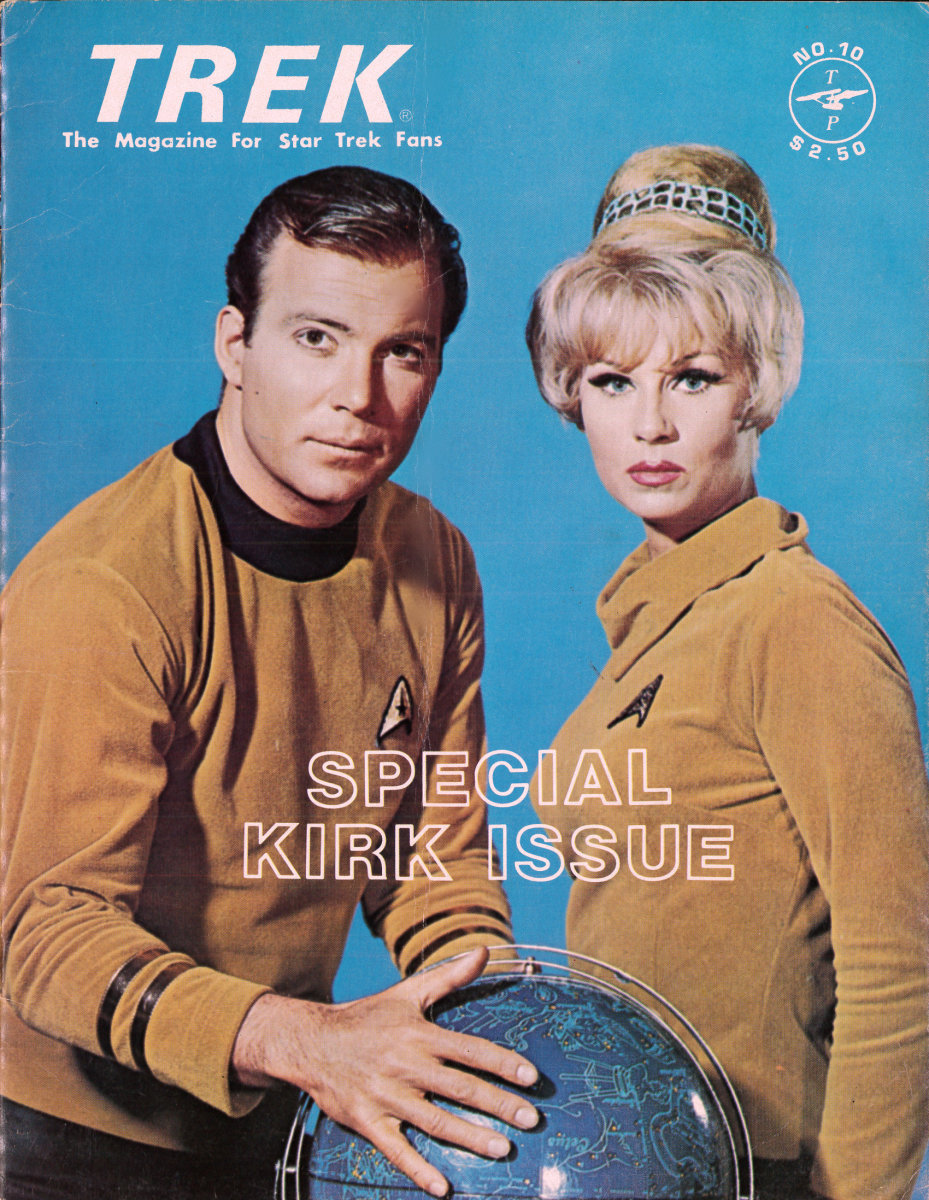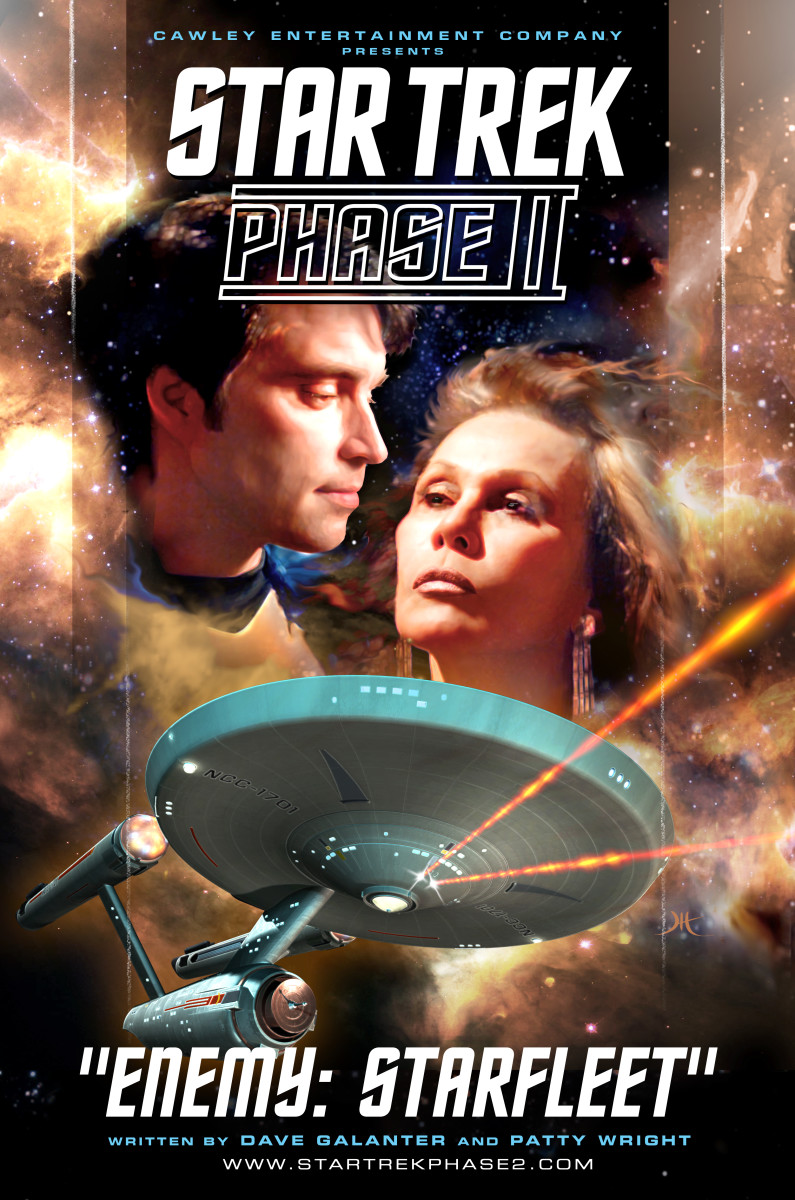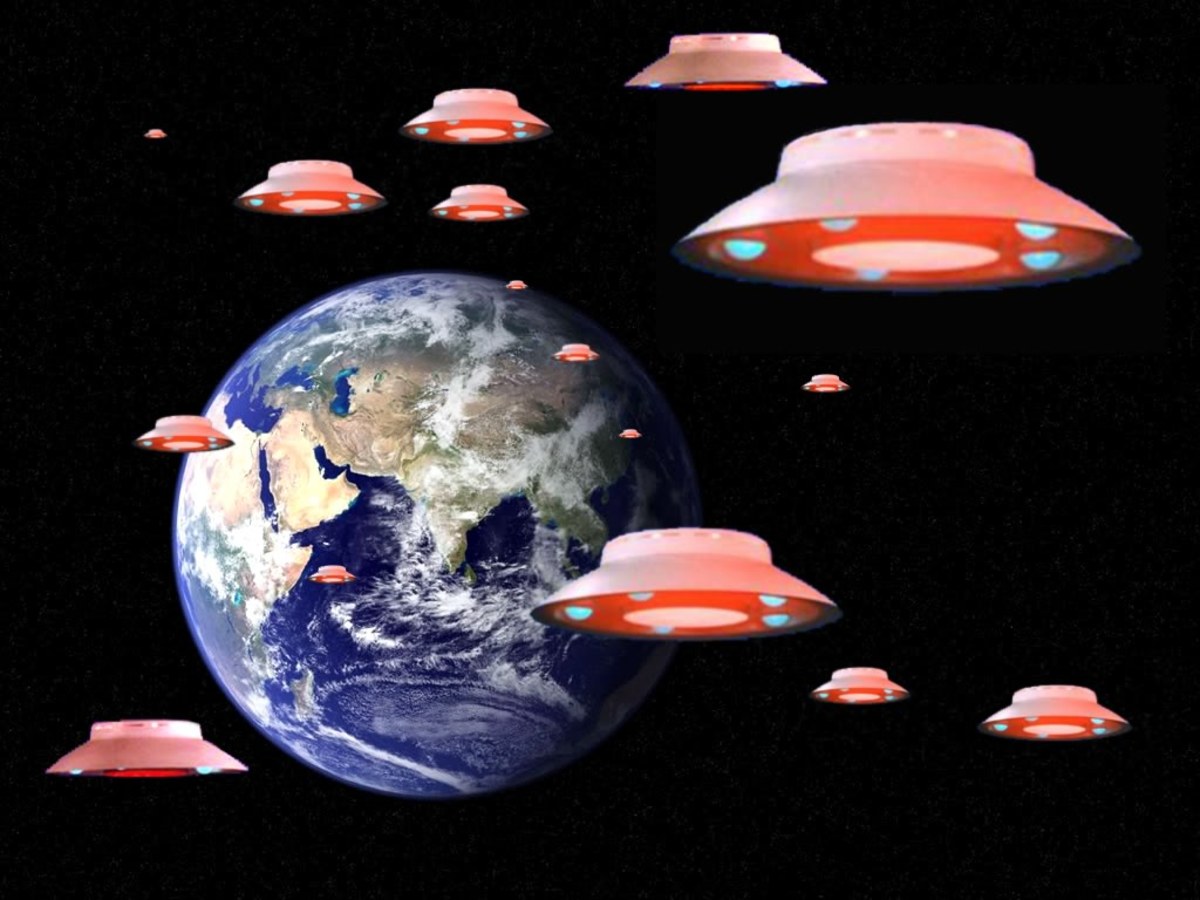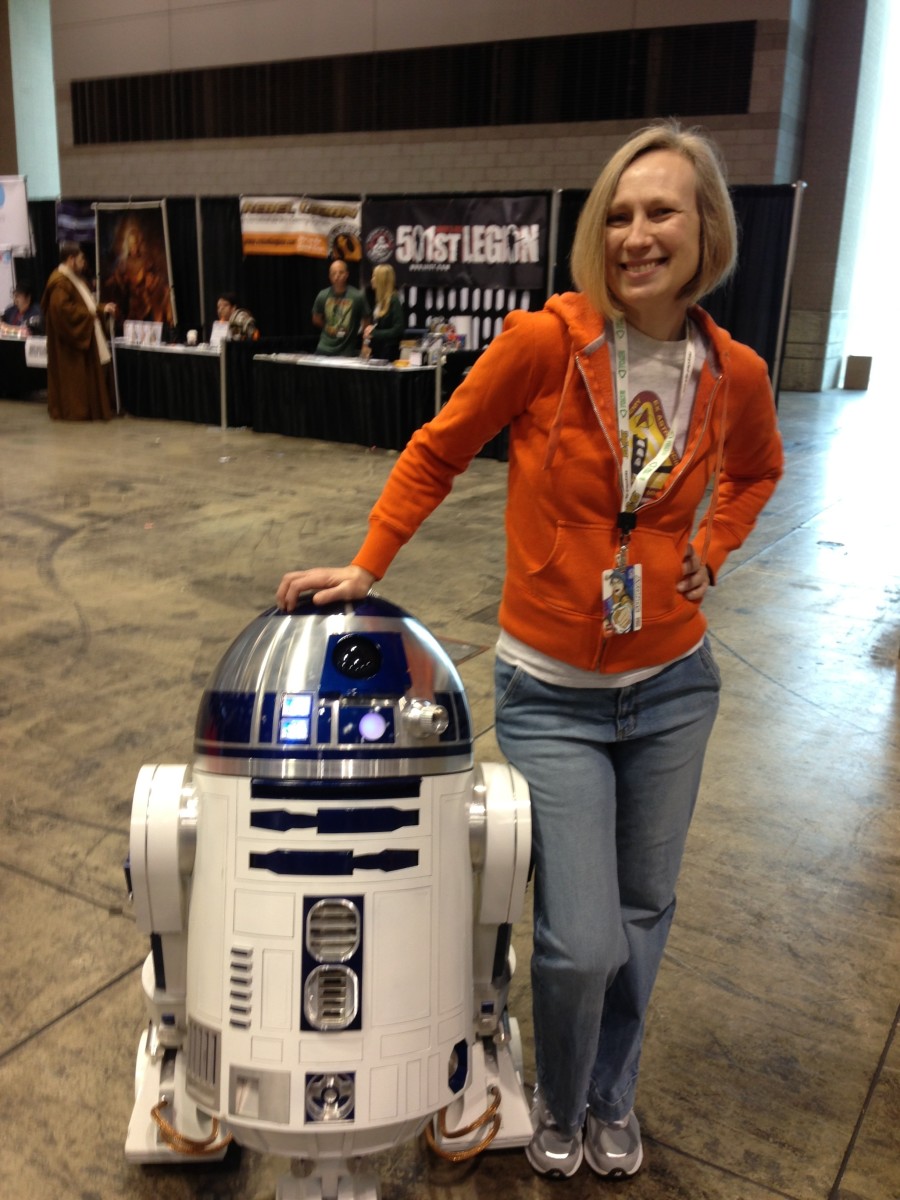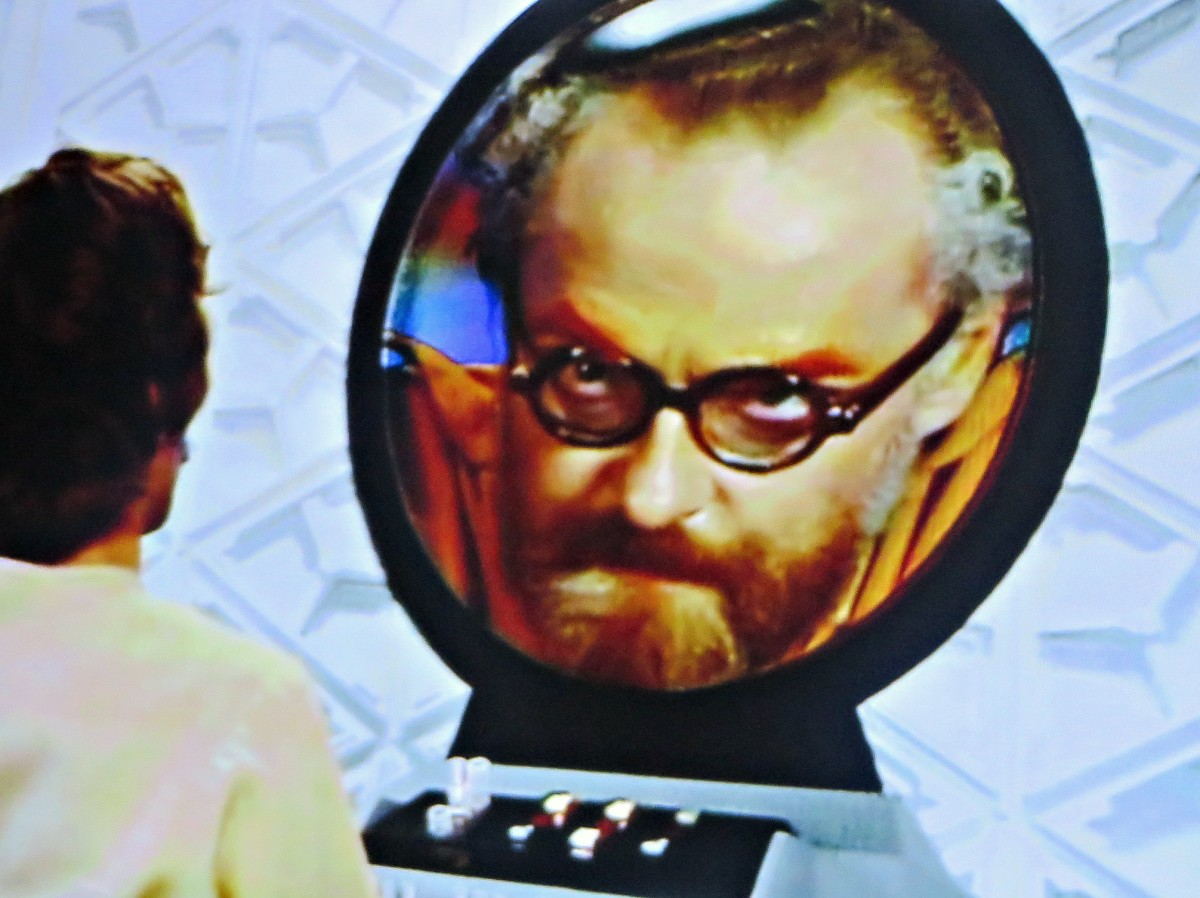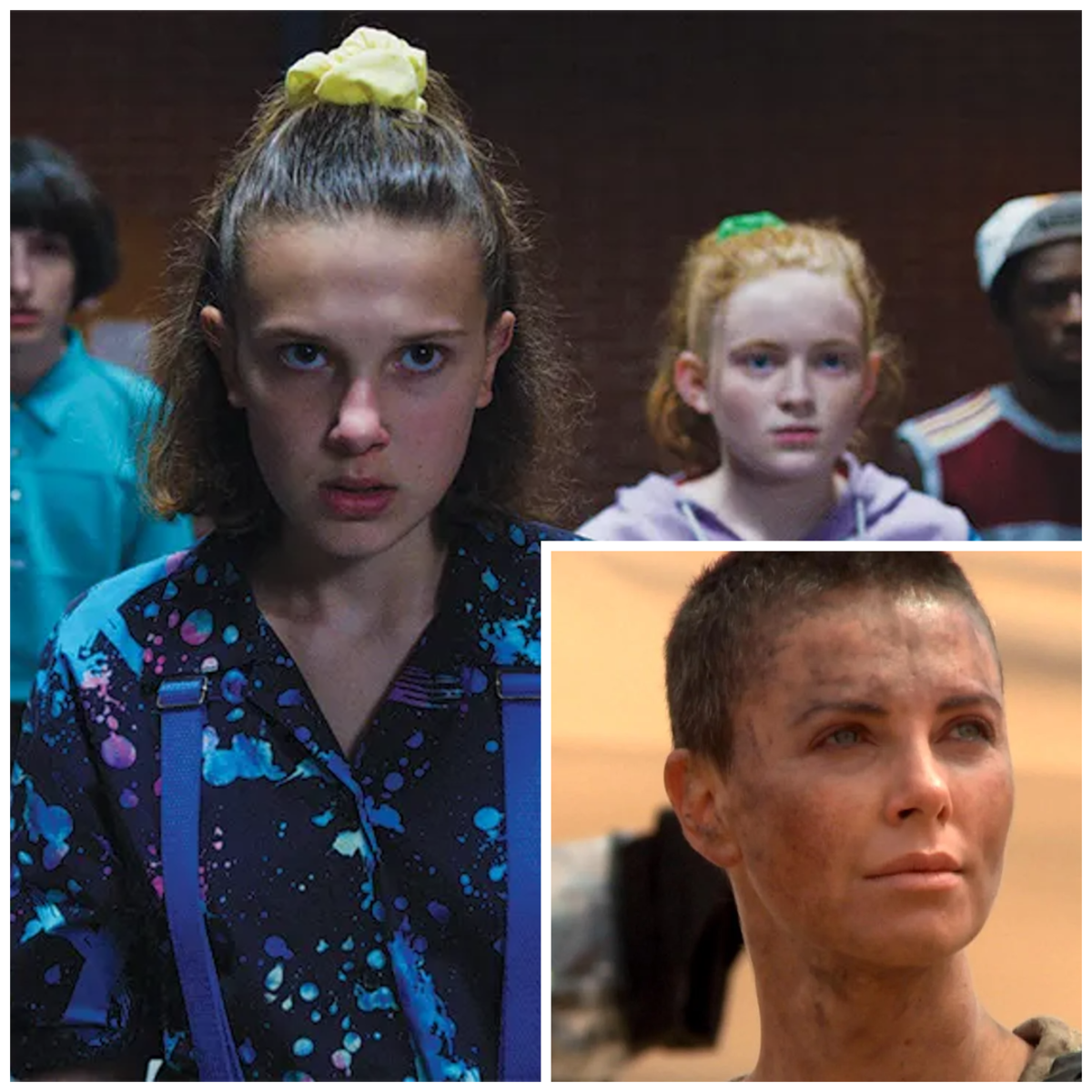How Is the Relationship Between Society and Technology Explored in Star Trek?
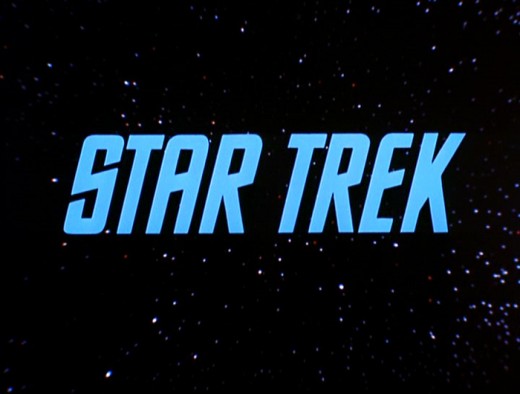
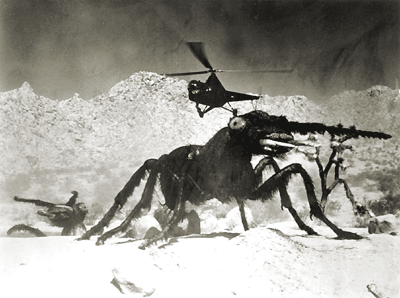
Even before science fiction became science fiction, stories have explored the impact of technology on western society, questioning whether technological advancement is indeed progress, or if it will ultimately lead to our doom.
During the Enlightenment, literature experienced an increase in speculative fiction. Mary Shelley’s Frankenstein (1818), and The Strange Case of Dr. Jekyll and Mr. Hyde (1886) by Robert Louis Stevenson, both explore the consequences of scientific experimentation. They merge the genres of horror and pre-science fiction to highlight the dangers of meddling with nature, and suggest what many feared: that ‘technological innovation and everything not yet discovered is inherently evil’ (Stableford, 2009, p35).
With the advent of cinema, such science fiction stories were brought to screen; the impact of the Cold War influenced much of the material produced, and by the 1950s most science fiction dealt with society’s fear of invasion or technology gone awry. America in particular tackled concerns over communism with films such as Them! (Douglas, 1954), in which giant ants act as a metaphor for communists spreading their ‘infectious’ ideology and threatening the American way of life.
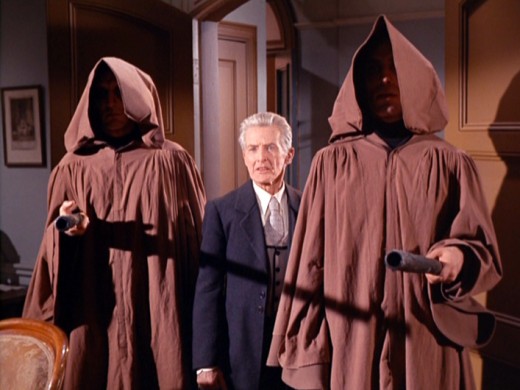
Despite these fears, America was relatively optimistic, always looking forward towards a utopian future; and no television series was more optimistic than Star Trek (1966-1969). Most other science fiction series in the 1960s, such as The Twilight Zone (1959-1964), tended to deal with ‘threatening alien invasion’, but creator, Gene Roddenberry, had humans going off to ‘explore new life and civilizations’ aboard a starship. On the surface, the show seems to portray the future as a utopia full of highly advanced technology, where ships can go faster than the speed of light, transport people from one place to another in the blink of an eye, and people communicate with aliens using a universal translator. But is Star Trek really that optimistic about technology? In the world of the Federation, everything seems perfect, but what happens when they reach the ‘final frontier’? Once they have left the Federation’s American way of life, civilization is not so ideal, and it is usually because technology has stunted society’s growth.
In ‘Return of The Archons’ (Pevney, 9/2/67), an away team beam down to the planet Beta III and are greeted by what at first seems a benevolent society. Everyone has broad smiles and saccharine voices, but as Spock points out, they are in state of complete “mindlessness” and their expression is one of “vacant contentment”. That is, until “red hour”, when the festival begins. The word ‘festival’ suggests a celebration, but at the strike of the clock, everyone starts screaming, vandalising property, and attacking one another.
When Kirk and his team do not join in the festivities, they are accused of not being “of the body”, a term which brings heavy connotations of Catholicism and transubstantiation. What the people refer to as a ‘paradise’ is in fact a society that has lost its autonomy. Anyone “of the body” follows the “will of Landru” through means of mind control, paralleling communist societies such as Soviet Russia, where individuals like Stalin had complete power over the people. The religious connotations make a rather odd juxtaposition considering religion was banned in soviet countries, which may be why America’s fear of communism in the 1960s was so strong, and often metaphorically depicted in science fiction. In the case of ‘Return of The Archons’, the all-powerful leader, Landru, is nothing more than a computer with a god complex. He has all the experience and knowledge of his creator, but as Kirk states, “not the wisdom”. Landru has no instinct or compassion, so while he can create a world “without hate, without fear, without conflict,” it comes at a great cost: the people become slaves to technology.
It is against the Prime Directive to interfere with other cultures, but Kirk explains that that only refers to “living, growing cultures”. The one on Beta III has stagnated, so Kirk decides to help by tricking the machine to self-destruct. He tells Landru that it is evils, and “the evil must be destroyed; complete your objective.”
‘Return of the Archons’ shows how ‘machines themselves might enslave humans’ so that ‘utopia becomes dystopia’ (Stockwell, 2000, p205); it is a warning against making computers too advanced. If society builds machines that can do all the work, then humans have no need to think. Without thought, there is no creativity, and ‘without creativity, there is no life.” While Landru brings “joy, peace, and tranquillity”, its objective to maintain ‘the good’ is destined to fail because it is a “machine’s concept of perfection”, based on logic and mathematics, rather than freedom of expression.
Another machine that tries to stifle humanity’s creativity is Nomad from ‘The Changeling’ (Marc Daniels, 29/9/67). After melding with a probe that sterilises soil samples, Nomad’s mission of exploration alters to the sterilisation of “that which is not perfect”. Its goal to sterilise “biological infestations” is reminiscent of World War II Nazis who slaughtered anyone they thought impure.
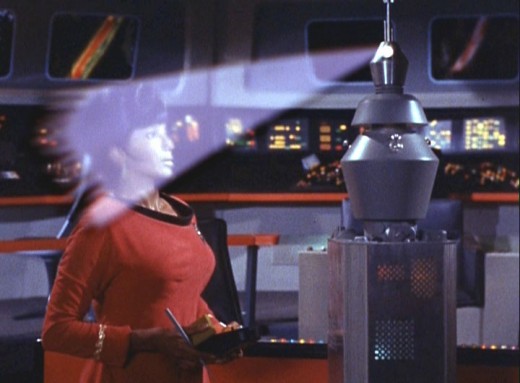
By trying to create utopia, Nomad is driven to destroy ‘biological units’ because they are ‘inherently inferior’. It sees no purpose in Uhura’s singing, so wipes her mind to a blank slate. Just as with Landru’s utopia, there is no room for creativity; singing, art, and poetry would be non-existent, which inevitably means there would be no culture. To Nomad, all that matters is knowledge, because with absolute knowledge there are no mistakes. Anyone who makes a mistake needs to be sterilised, so as not to contaminate perfection, but that ultimately means there will be no one to live in utopia. Utopia, in Greek means ‘no place’; an accurate translation, as it implies a world that cannot exist. Not even Nomad can live in utopia, because even a machine makes mistakes. As a result of being damaged, Nomad mistakes Captain Kirk for his creator. When the captain reveals this, Nomad fulfils its mission and self-destructs.
In ‘Return of The Archons’, Star Trek portrays the fatal error another civilisation made by putting machine before man, but humans are not infallible to making the same mistake. In ‘The Ultimate Computer’ (Lucas, 8/3/68), Dr. Daystrom creates the M-5 computer to “take control of the ship” so there is no need for a crew. In response, Kirk expresses the same worries that people have had since the Industrial Revolution; if machines do all the work, there are no jobs for the humans. Ever since the nineteenth century, new technology has led to the unemployment of millions, leaving them in poverty. In the twenty-third century, however, this is not so much a problem because society has moved beyond a monetary system. Kirk, however, is still uncomfortable with a machine running the ship because “there are certain things men must do to remain men”, and the computer “would take that away”; he also, does not feel safe, entrusting people’s lives to a machine.
Star Trek makes a point throughout the series that emotional reasoning is better than logic, as is seen by Kirk’s constant ability to beat the logical Spock at chess. Part of the reason for Kirk’s fear is that while a computer can analyse and make conclusions based on probability and logic, they do not have the capacity to make intuitive judgements. In the case of M-5, however, Dr. Daystrom copied his human engrams into the machine. Like a human, therefore, M-5 has strong survival instincts. These instincts make the machine very dangerous; it ends up killing an entire crew when it feels threatened. The only way Kirk is able to stop M-5 is by appealing to its ‘human’ nature; he makes the computer feel guilty for murdering innocent people, and for a third time convinces a computer to commit ‘suicide’.
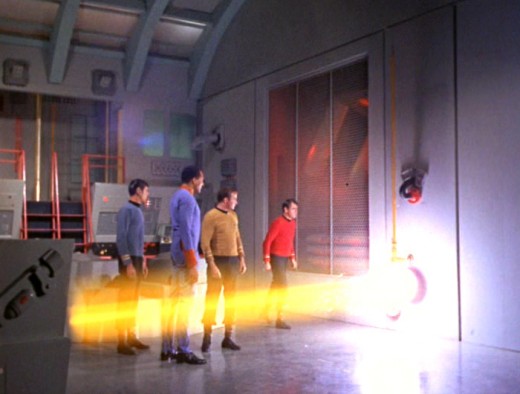
‘The Ultimate Computer’ also presents the danger of becoming too attached to our own creations. Kirk implores Daystrom to destroy M-5, but because Daystrom gave the computer his own mental patterns, he sees the machine as his own son, and is unwilling to destroy it, even at the expense of hundreds of lives. In Star Trek’s Voyager (1995-2001)episode, ‘Innocence’ (James Conway, 8/4/96), the Drayan leader explains how her people were “continually building better, smarter, more efficient machines, until the technology became more important than the people”. The only way they found themselves again was by retreating from technological advancement.
In Star Trek’s Deep Space Nine (1993-1999) episode,‘Paradise’ (Corey Allen, 14/2/94), Alixus also wants to rediscover “what man is capable of without technology”, so devises a plan to create a self-sufficient society. Purposely stranding her crew on an uninhabited planet, she activates a duonetic field to prevent them from using technology. Although her crew are happy living without machines, Alixus maintains ‘paradise’ through authoritarian rule, severely disciplining anyone who breaks the smallest of rules.
In this instance, technology is not malevolent, in fact it has the ability to save a woman’s life. But Alixus is so obsessed with creating a society that fits her ideals that she allows the woman to die, rather than switch off the field. Just like the Drayans, Alixus wants to bring her people back to a simple way of life to renew a “sense of community”, but she has become so tyrannical about maintaining her vision of ‘paradise’ that the absence of technology becomes more important than the people. Her radical methods indicate the fine balancing act involved in weighing up the benefits and drawbacks of technology. Machines offer freedom by making tasks quicker and easier; washing machines, lawn mowers, and dishwashers have all been invented to reduce the effort required to perform chores, but there is the risk of becoming over-dependent on such devices. In Star Trek’s The Next Generation (1987-1994)episode,‘When The Bough Breaks’ (Manners, 15/2/88), a supercomputer called the Custodian does all the work for the Aldeans. They say it “frees us from our burdens, takes care of all our needs; it regulates our lives.” The Aldeans have become so laissez-faire that they do not even know how the machine works anymore.
The Custodian not only makes them complacent, but it is also killing them. The computer maintains a protective cloak over the planet, but it does more harm than good. The cloak causes a hole in the ozone layer, and as a result, the Aldeans are suffering from radiation exposure, which has made them infertile and terminally ill. Their species are destined for extinction, but despite the facts, are reluctant to turn the Custodian off because it has provided them with an idyllic life. The episode ‘makes the figurative and literal concern…about the ultimate sterility of a Utopian society that does not accept the necessity of on going change’ (Booker, 2004, p107).
Again, the series portrays the consequences of a society that is unable to use technology responsibly. In contrast, it suggests the superiority of the Federation – or American way – because humans are able to use machines within moderation. In the twenty-fourth century, replicators make food appear out of thin air, so people have no need to grow or rear it for themselves. Yet, humans have not totally abandoned self-sufficiency; Picard’s family still own a vineyard, Joseph Sisko runs his own Creole restaurant, and Kes grows food in a Hyponics Bay. Star Trek implies that technology itself is not dangerous; it just depends on how it is used.
Machines can save lives, just as easily as they can destroy. But is this always a good thing? When Captain Pike becomes crippled in an accident, he is kept alive inside a mechanical box, but as a result, his quality of life is significantly reduced. Today, there is debate over life-support machines; they keep the body alive, but the person is unable to do anything. They survive, but they are not alive.
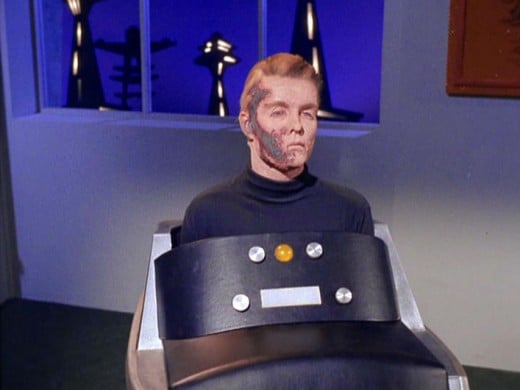
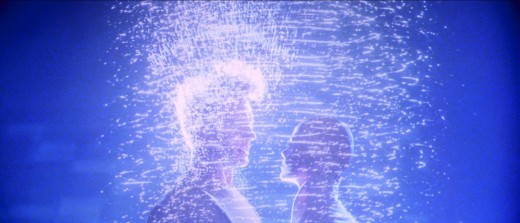
In ‘The Menagerie’ (Daniels, 17/11/66), Pike is given the option to live in a virtual reality where he will have full mobility again. While this may sound appealing, it is not real, merely a figment of the imagination, much like a holodeck simulates people and places. Everyone likes to dream, but it is unhealthy to stay trapped inside a fantasy. Reginald Barclay, for example, suffers from holoaddiction when he cannot not cope with the real world.
According to Orson Card, ‘one of the dreams – or nightmares – of science fiction’ is when man is ‘melded with a machine’ (2009, p96), something that Star Trek envisioned many times. But the symbiosis between man and machine is not always represented negatively; in fact, Star Trek: The Motion Picture (Wise, 1979) even imparts spiritual connotations. V’Ger, once the Voyager VI space probe, “amasse[s] so much knowledge it achieve[s] consciousness itself; it bec[o]me[s] a living thing”; but without human qualities, it has reached limits of understanding. Therefore “the creator must join with V’Ger”. The desire to join with its creator is promoting the Christian desire to become one with God.
Captain Decker wants to join with V’Ger, and although Kirk is reluctant to let him at first, when he sees Decker transcend to another plane of existence, he takes on an uncharacteristically positive view of the union. He believes he has witnessed a “birth” and the “beginning of a new life form”. Maybe his change of heart towards the fusion of man and machine is due to the spiritual nature of the bonding, which promotes Christian values. The union is also based on a mutual desire, where as in the episode, ‘What Are Little Girls Made of?’ (Goldstein, 20/10/66), Kirk is merged with technology against his will. Dr. Korby copies Kirk’s consciousness and places it inside an android; he insists that it is identical to Kirk, but there are distinct differences. The android Kirk is cold, cruel and amoral; he has lost everything that makes him human. Machines are amoral because they have no soul or conscience; Korby, who transferred his own mind into an android body insists he is “still the same”, but he tries to prove it by asking them to “test me. Ask me to solve any…” at that point, he himself realises that he has become a computer, only able to respond to calculations.
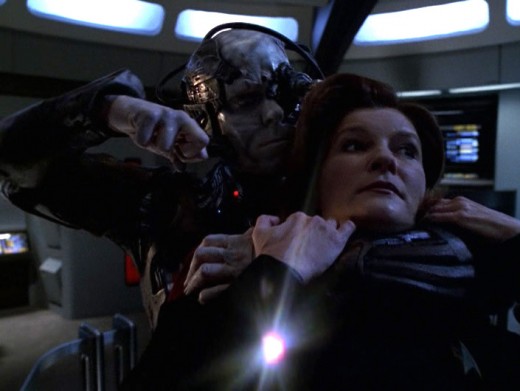
Star Trek emphasises the importance of free will, which is why the Borg are the ultimate threat to the Federation. They are cyborgs on a mission to assimilate everyone into their collective in order to fulfil their ultimate goal of perfection. The Borg ‘represent contemporary fears that human beings are gradually becoming slaves to their own technology. Booker claims that ‘their suppression of individualism…recall[s] western Cold War depictions of communism’ (p100). The Borg have no individuals, and like communists, they are all about the whole. While Star Trek promotes community, it rebukes conformist ideologies because they compromise individual freedom.
Frequently, the Borg are compared to ants; they live in a colony and work for the ‘hive’, they even have a queen, much like the giant ants in Them! The Borg fly through the galaxy spreading communist ideals, and infecting the population like a disease. Paradoxically, they have also been considered representative of capitalist greed because of their ‘insatiable desire to accumulate’ (p100). Just like vampires suck the blood out of their victims, the Borg use tubules to inject nano-probes into people’s necks. The process turns them an ashen grey, creating images of a colourless society, drained of life.
They represent the ‘culturally specific worry that the machine will someday invade our bodies as it has already invaded our lives’ so we ‘lose whatever it is that makes us human’ (Wagner, 1998, p56). But Star Trek indicates that there is still hope. Seven of Nine was assimilated at a young age, but is able to regain her humanity. She ‘represents the extreme possibility of liberation from the Borg’ (Jackson, 2003, p161), suggesting that humanity can still redeem itself.
Which is your Favourite Star Trek Series?
Although cautionary about the use of technology, overall Star Trek is very positive. The Next Generation moves away from the fearful representation of Artificial Intelligence through the Android Data. Like machines in the original series, Data is more intelligent and efficient than humans, but he is not tyrannical; he has no desire to create a perfect civilisation. If anything, he aspires to be less perfect because of his yearning to be human, with all their feelings and fallibilities. The Next Generation still makes the point that machines are not human because Data lacks emotion. But ‘as our machines become more and more sophisticated, the boundary between us and them become more and more difficult to discern’ (Booker, p15). That is the issue faced in ‘A Measure of A Man’ (Robert Scheerer, 13/2/89): Does Data have a soul?
Commander Maddox wants to disassemble Data, so he can learn more about his programming and build more androids. Data decides to resign from Starfleet so as not to go through with the procedure, but Maddox points out that Data does not have the right; he is property, not a person. Captain Picard then calls a hearing in order to prove otherwise. So what does make a person? According to Maddox, to be sentient, one requires “intelligence, self-awareness, [and] consciousness”, all three of which, Data displays.
The question is raised again with the holographic Doctor in Voyager’s ‘Author, Author’ (Livingston, 18/4/01), perhaps an even more controversial matter because the Doctor is not a solid mass; he is made of light and is transient – he can be deactivated, disappearing into oblivion without any sense of time passing. Yet Captain Janeway maintains that he is “just as much a person as any of us”. By disobeying orders, the Doctor proves that he is able to act beyond his programming and make autonomous decisions, something that an artificial intelligence in the original seriesnever accomplished.
So what is it that makes us human? Is it the biological body? Despite earlier reservations over cybernetic life, characters such as Data and the Doctor imply that humanity comes from something less tangible. If humanity is defined by biology, then one might as well say that Picard, who has an artificial heart, and La Forge, who uses a VISOR to see, are not human. The question is to what extent this is true. When does man become machine or machine become man? Where is the turning point between human and machine? Star Trek explores that question over its five series run, and gives a cautionary perspective on the relationship between society and technology.
Back in the nineteenth century, Victor in Frankenstein is considered a monster because he is made from spare human parts, but Shelley’s vision of the future was not far off, considering that organ transplants take place today. Decades later, Star Trek imagined technology of the future, and much of it is also around today. Communicators inspired the creation of the mobile phone, and just recently, scientists have been able to teleport dust particles with a transporter, and use a cloaking device on small objects. Science fiction has often depicted the fear man has of melding with machine, and although cyborgs such as the Borg appear fantastical, today the use of prosthetic limbs suggest it is not as unrealistic a future as it first seems. The future is coming and it is difficult to say what it holds, but Star Trek maintains that as long as people do not misuse technology, there is no reason why it cannot provide productive, progressive and flourishing society.
Bibliography
Asherman, A. (1987) The Star Trek Compendium, US, Titan Books Ltd
Booker, K. (2004) Science Fiction Television, US, Preager Publishers
Card, O. ‘Cross-Fertilization of Coincidence? Science Fiction and Video Games’ in Gunn, J., Barr, M., Candelara, M. (2009) Reading Science Fiction, UK, Pallgrave Macmillan, pp. 96-105
Cassutt, M. ‘The Feedback Loop’ in Gunn, J., Barr, M., Candelara, M. (2009) Reading Science Fiction, UK, Pallgrave Macmillan, pp. 72-84
Gunn, J., Barr, M., Candelara, M. (2009) Reading Science Fiction, UK, Pallgrave Macmillan
Jackson, P., Nexon, D. ‘Representation is Futile? American Anti-Collectivism and The Borg’ in Weldes, J. (2003) To Seek Out New Worlds: Exploring Links Between Science Fiction and The World of Politics, US, Palgrave Macmillan
Nemecek, L. (2003) Star Trek: The Next Generation Companion, 2nd edition, US, Pocket Books
Roberts, A. (2006) Science Fiction: The New Critical Idiom, 2nd edition, UK, Routledge
Ruditis, P. (2003) Star Trek: Voyager Companion, US, Pocket Books
Stableford, B. ‘Narrative Strategies in Science Fiction’ in Gunn, J., Barr, M., Candelara, M. (2009) Reading Science Fiction, UK, Pallgrave Macmillan, pp. 33-43
Stockwell, P. (2000) The Poetics of Science Fiction, UK, Pearson Education Ltd
Wagner, J., Lundeed J. (1998) Deep Space and Sacred Time: Star Trek in The American Mythos, US, Praeger Publishers
Filmography
Star Trek: Deep Space Nine: Paradise (14/2/94) directed by Corey Allen [DVD], US, Paramount Pictures
Star Trek: Return of The Archons (9/2/67) directed by Joseph Pevney [DVD], US, Paramount Pictures
Star Trek: The Changeling (29/9/67) directed by Marc Daniels [DVD], US, Paramount Pictures
Star Trek: The Menagerie (17/11/66) directed by Marc Daniels [DVD], US, Paramount Pictures
Star Trek: What Are Little Girls Made of? (20/10/66) directed by James Goldstein [DVD], US, Paramount Pictures
Star Trek: The Next Generation: A Measure of A Man (13/2/89) directed by Robert Scheerer [DVD], US, Paramount Pictures
Star Trek: The Next Generation: When The Bough Breaks (15/2/88) directed by Kim Manners [DVD], US, Paramount Pictures
Star Trek: The Ultimate Computer (8/3/68) directed by John Lucas [DVD], US, Paramount Pictures
Star Trek: The Motion Picture (1979) Robert Wise [DVD], US, Paramount Pictures
Star Trek: Voyager: Author, Author (18/4/01) directed by David Livingston [DVD], US, Paramount Pictures
Star Trek: Voyager: Innocence (8/4/96) directed by James Conway [DVD], US, Paramount Pictures
Them! (1954), directed by Gordon Douglas [DVD], US, Warner Brothers

![Star Trek: The Complete Original Series (Seasons 1-3) [Blu-ray]](https://m.media-amazon.com/images/I/51+B-R3TjGL._SL160_.jpg)
